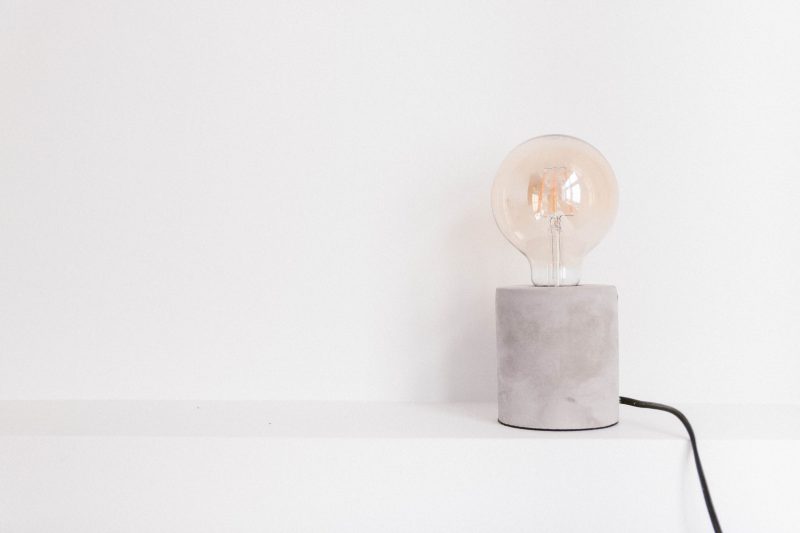With new technology and electrical appliances, energy consumption has changed over time, increasing people’s reliance on electricity. People depend on electrical appliances to regulate room temperature, preserve and prepare food, and security which are essential necessities.
The energy that individuals use on a daily basis has an effect on the monetary as well as environmental costs. In 2019, fossil fuels accounted for nearly two-thirds or 63.3% of the world’s electricity, which implies the process of generating electricity is causing air pollution from burning fossil fuels. Electricity prices are varying across countries and almost every year there is an increase in electricity tariffs. The financial cost of electricity is found to force people to make a tough decision between buying food or staying warm during winter months in the UK.
Smart home energy management could be a solution for reducing energy consumption that aims to lower energy bills and preserve the environment. Smart home energy management, or as known as smart home automation, utilizes internet-enabled devices to remotely and mechanically control appliances like lighting, heating, and security systems in and around a house.
The technology is using algorithms that enable appliances to be smart enough to record and analyze electrical usage and offer solutions for reducing energy consumption. For example, the system found out that during certain times the appliances are less active, during these times the system will automatically turn off the appliances to prevent wasting electricity on appliances in standby mode.
In an article, a researcher mentioned that “smart home technology, also often referred to as home automation or domotics (from the Latin domus meaning home), provides homeowners security, comfort, convenience, and energy efficiency by allowing them to control smart devices, often by a smart home app on their smartphone or other networked devices.”
How to reduce energy consumption?
The primary cause of rising CO2 levels in the atmosphere is the use of fossil fuels such as coal, oil, and gas. The more greenhouse gases in the atmosphere, such as carbon dioxide (CO2), the higher the world temperature will rise. Additionally, prolonged exposure to elevated particle pollution will contribute to reduced respiratory function. Making better choices in household energy consumption will save energy for the purpose of mitigating climate change and preserving a healthier environment. Here are some energy-saving tips for using smart home energy management systems:
Elevate your home with a smart lighting system
Most smart lighting systems use LED (light emitting diodes) which consumes the least amount of electricity compared to other types of lighting such as incandescent bulbs and fluorescent lamps. A study showed that LED uses the least amount of electricity with its operational cost being 6.46 times lesser than incandescent bulbs.
Smart lighting uses a sensor or remote control to switch lights on and off. Movement sensor enables the light to automatically turn on, for instance in front of an entrance or stairways. Therefore, people do not need extra time to manually turn on and off a light; also no need to worry about forgetting to turn off the light. Some smart lighting also has a light sensor that enables it to automatically turn off when there is daylight.
Moreover, people could also control the light from a smartphone which could be very convenient. For example, turning off the lights in the bed without having to get off and walk to the switch. Moreover, some lights also have a dimming function which could save electricity, as well as adjust to the individual’s needs.
Utilize smart power strips
The use of a smart power strip allows users to control the flow of electricity and track their energy usage through a smartphone app. People frequently charge their electronics, and occasionally they leave them plugged in all the time. However, plugged chargers wasted 55% of the total energy use. Unused devices stealthily consume electricity when they are plugged in or in standby mode.
Smart power strips could automatically turn off the electricity when it detects the appliances are no longer plugged or people manually turn it off through an app on their phone. Moreover, smart power strips track energy use and provide a report that enables its user to analyze their electricity consumption and find ways to save energy.
Install smart thermostats
The thermostat controls the heating and cooling system to work when a room comes to a certain temperature, therefore, the air conditioner does not work at full power all the time to save energy.
Smart thermostats could be controlled remotely through other smart devices and people could schedule the temperatures based on the time in advance. In addition, some smart thermostats also have sensors to detect occupancy, so the air conditioner will not use much energy when there is no one in the room.
Temperature setback is one of the features of smart thermostats that will activate the air conditioner when the temperature has gone lower or higher by certain degrees. A study from 40 cities in the US found that a 2°C temperature setback during the occupied period might result in an extra 20% reduction in energy used for Heating, Ventilation, and Air Conditioner (HVAC), and in certain severe cases, a 40% reduction.
Investing in smart home energy management
As mentioned, each smart appliance is proven to reduce energy use. However, buying and installing smart appliances may require a significant cost. Smart appliances and stable internet connection are essential investments in order to have energy use automation at home.
Research conducted in Germany found that the investment cost of 528.35€ for a thermostat, lamp, hub, and motion and light sensors resulted in 14,222 kWh of annual energy saving. The internal rate of return with a payback period of 2.5 months demonstrated that energy savings from home automation effectively lead to highly profitable total investments. However, the same experiment in Algeria resulted in 11,020 kWh and one year and nine months payback period.
The results are sensitive to geographical factors, energy policy, tax, and energy prices. Therefore, when one is interested in investing in smart home energy management, it is important to find out about energy prices and benchmark with other homeowners that use energy automation in the same country or city.
In conclusion
Smart home energy management has proven to be effective in lowering energy use which is beneficial for household expenditure and the environment. There are also more benefits such as being able to control electronic devices remotely and track energy consumption. However, the cost of adopting an energy automation system could significantly affect one’s decision. Energy policy, tax, and prices should be taken into consideration before investing.
To take your reading on energy management further, visit the Household Management Science Labs. The lab produces courses, certifications, podcasts, videos, and other learning materials using the research of the Institute for Life Management Science. Check out the Household Management Science Labs today.
Photo by Andreea Ch on Pexels



